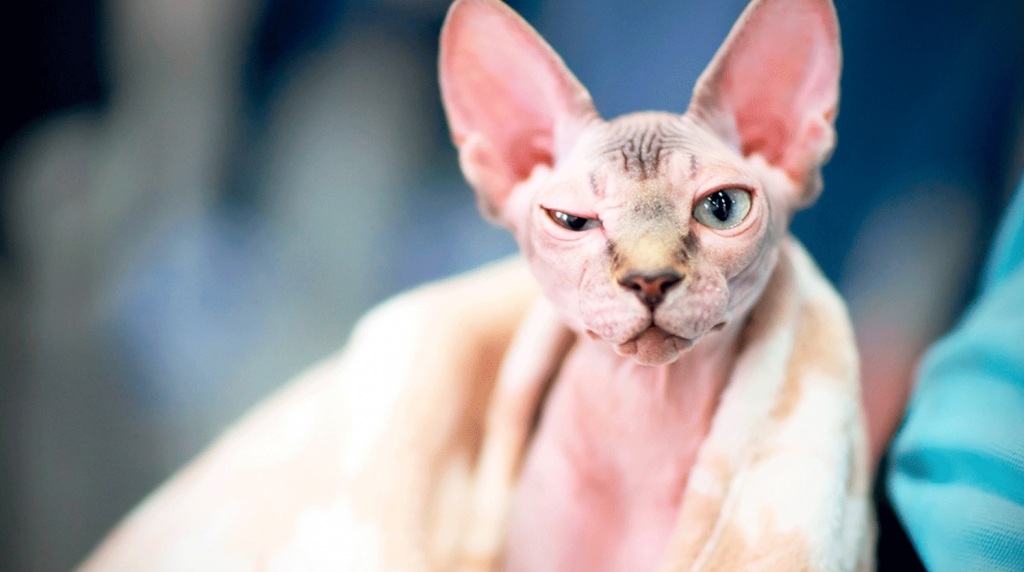Are Hairless Cats Hypoallergenic in 2025? A Comprehensive Look at the Science and Reality
Related Articles: Are Hairless Cats Hypoallergenic in 2025? A Comprehensive Look at the Science and Reality
Introduction
With great pleasure, we will explore the intriguing topic related to Are Hairless Cats Hypoallergenic in 2025? A Comprehensive Look at the Science and Reality. Let’s weave interesting information and offer fresh perspectives to the readers.
Table of Content
Are Hairless Cats Hypoallergenic in 2025? A Comprehensive Look at the Science and Reality

The allure of a sleek, hairless cat is undeniable. For many potential cat owners with allergies, the idea of a feline companion without the typical allergen-laden fur seems like a dream come true. But the question remains: are hairless cats truly hypoallergenic in 2025, or is this a persistent myth perpetuated by wishful thinking? The answer, as with many things in the world of feline allergies, is nuanced and requires a deep dive into the science behind cat allergies.
Understanding Cat Allergies: It’s Not About the Hair
Before delving into the specifics of hairless cats, it’s crucial to understand what triggers allergic reactions in humans. Contrary to popular belief, the primary allergen in cats isn’t their fur itself. The culprit is Fel d 1, a glycoprotein produced by feline salivary and sebaceous glands. This protein is found in their saliva, urine, and sebaceous secretions, and it readily attaches to dander (dead skin cells) and fur, making it easily airborne. When someone with a cat allergy inhales Fel d 1, their immune system overreacts, triggering a cascade of allergic symptoms like sneezing, itching, watery eyes, and respiratory issues.
Hairless Cats: Less Fur, but Still Fel d 1
While hairless cats lack the substantial fur coat of their fluffy counterparts, they still produce Fel d 1. The absence of a thick coat might reduce the amount of allergen that becomes airborne, but it doesn’t eliminate it. In fact, some studies suggest that hairless cats may produce even more Fel d 1 than their furry counterparts, potentially due to compensatory mechanisms in their skin glands. This higher concentration of Fel d 1 could paradoxically make them more allergenic for some individuals.
The Myth of the "Hypoallergenic" Cat
The term "hypoallergenic" when applied to cats is largely misleading. There’s no breed of cat that is truly hypoallergenic, meaning completely free of allergens. The breeds often marketed as "hypoallergenic," including hairless varieties like the Sphynx, Peterbald, and Donskoy, simply produce less Fel d 1, or distribute it differently, potentially resulting in a lower exposure for some individuals. This reduced exposure, however, doesn’t guarantee an absence of allergic reactions.
The Role of Genetics and Individual Variation
The level of Fel d 1 produced by a cat can be influenced by genetics. Some cats naturally produce less of this protein than others, regardless of breed. This genetic variability means that even within a single hairless breed, some cats will be more allergenic than others. Furthermore, the severity of allergic reactions varies significantly from person to person. Someone with a mild allergy might tolerate a hairless cat better than someone with a severe allergy, even if both individuals are exposed to the same amount of Fel d 1.
Factors Influencing Allergen Exposure
Several factors beyond the cat’s breed can influence the level of allergen exposure:
- Grooming: Regular grooming, even for hairless cats, is crucial to remove accumulated dander and reduce the amount of airborne Fel d 1.
- Environment: Keeping the home clean and dust-free can minimize allergen accumulation. Regular vacuuming and air filtration can help.
- Cat’s health: A healthy cat generally sheds less dander, potentially reducing allergen levels.
- Individual sensitivity: The severity of an individual’s allergy determines their tolerance level to even low levels of Fel d 1.
2025 and Beyond: Advances in Allergy Management
While the fundamental biology of cat allergies remains unchanged in 2025, advancements in allergy management offer hope for individuals seeking feline companionship despite sensitivities. These advancements include:
- Allergen-blocking therapies: Research continues into developing therapies that neutralize or block Fel d 1, potentially reducing its allergenic effects.
- Improved diagnostic tools: More precise allergy testing can better identify the specific allergens triggering reactions, allowing for tailored management strategies.
- Immunotherapy: Allergy shots (immunotherapy) can desensitize individuals to cat allergens over time, reducing the severity of their reactions.
Conclusion: Informed Decisions for Sensitive Individuals
In 2025, the notion of a completely hypoallergenic cat remains a myth. Hairless cats might offer a reduced risk of allergic reactions for some individuals compared to furry cats, but they are not a guaranteed solution. Before acquiring a hairless cat, individuals with allergies should:
- Undergo allergy testing: This helps determine the severity of their allergy and whether they are likely to react to cats.
- Spend time with a hairless cat: This allows for a trial period to assess their personal reaction.
- Practice thorough cleaning and grooming: This helps minimize allergen exposure.
- Consider alternative solutions: If allergic reactions are severe, adopting a hypoallergenic pet (such as a certain breed of dog) or exploring other companionship options might be more suitable.
Ultimately, the decision of whether or not to adopt a hairless cat should be a carefully considered one, based on individual allergy severity, realistic expectations, and a commitment to managing allergen levels effectively. While the hope for a truly hypoallergenic cat persists, the focus in 2025 and beyond should be on informed choices and responsible pet ownership, ensuring both the cat’s and the owner’s well-being. The reality is that even with hairless cats, allergy management remains crucial for sensitive individuals.








Closure
Thus, we hope this article has provided valuable insights into Are Hairless Cats Hypoallergenic in 2025? A Comprehensive Look at the Science and Reality. We hope you find this article informative and beneficial. See you in our next article!